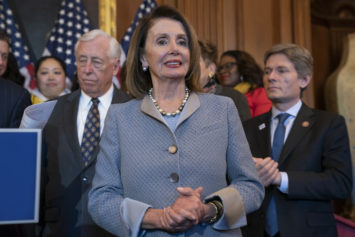More than half of U.S. minority patients are cared for by doctors who are also minorities, according to a new study published in JAMA Internal Medicine.
According to the numbers, about 54% of minority patients report that their physician is Black, Hispanic, or Asian; also about 70% of non-English speaking patients report having a doctor of color.
These are patients who historically fall into disadvantaged categories with regards to lack of access to health care, according to the study’s lead author, Dr. Lyndonna Marrast from the Cambridge Health Alliance in Massachusetts.
The data are from 7,070 adults in the 2010 Medical Expenditure Panel Survey, which identified medical providers. These physicians of color make up about only 15% of the healthcare provider workforce.
The odds are that minority, low-income, Medicaid and non-English speaking patients are more than five times likely to see a non-white doctor, compared to non-Hispanic white patients.
“Patients from disadvantaged groups have substantial problems accessing care,” Dr. Lyndonna Marrast told Atlanta Daily World. “The fact that minority physicians are much more likely to care for disadvantaged patients suggests that expanding the racial diversity of the physician workforce in the U.S. could be key to improving access to care.”
Especially with the biggest overhaul of the U.S. health- care system since the 1960s, The Patient Protection and Affordable Care Act — also known as Obamacare is slated to cover millions of poor Americans who could not afford insurance beforehand. Thus, posing a high influx of patients for this small group of doctors. The face of the country is also changing as Hispanic and Asian demographics are slated to double in size by 2060.
Some of the suggestions to help alleviate this burden in underserved communities call to diversify the workforce, Dr. Danny McCormick, an associate professor of medicine at Harvard Medical School said “in order to increase the number of Black and Hispanic physicians, medical schools will need to more fully consider the physician workforce needs of the health care system as a whole in admissions decisions.”
And in an editorial accompanying the study, Dr. Somnath Saha of the Portland VA Medical Center in Oregon, wrote that training more doctors will not meet the nation’s growing needs:
“We should be deliberately selecting and training physicians who will go into undersupplied specialties…serve vulnerable patient populations…and practice in underserved communities.”
But Dr. Marrast cautioned that a diverse workforce is not a quick solution and that ideally care should be integrated where everyone has equal access. Training more doctors would only be a step in solving health disparities in our country.
S.C. Rhyne is a blogger and novelist in New York City. Follow the author on twitter @ReporterandGirl or on Facebook and visit her website at www.SCRhyne.com
